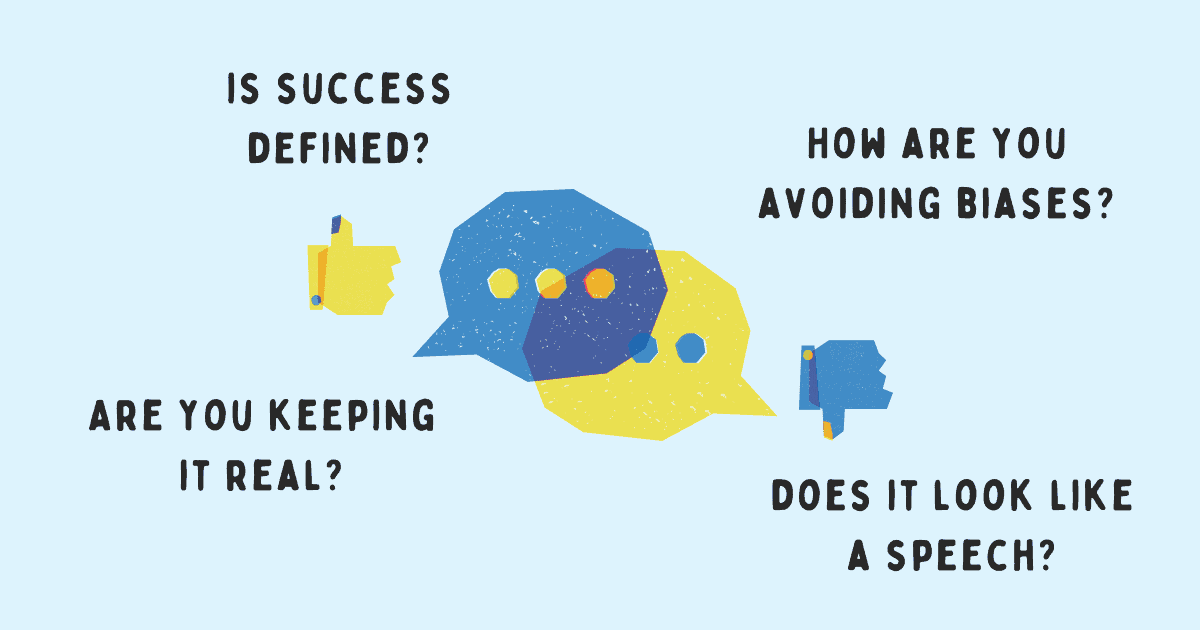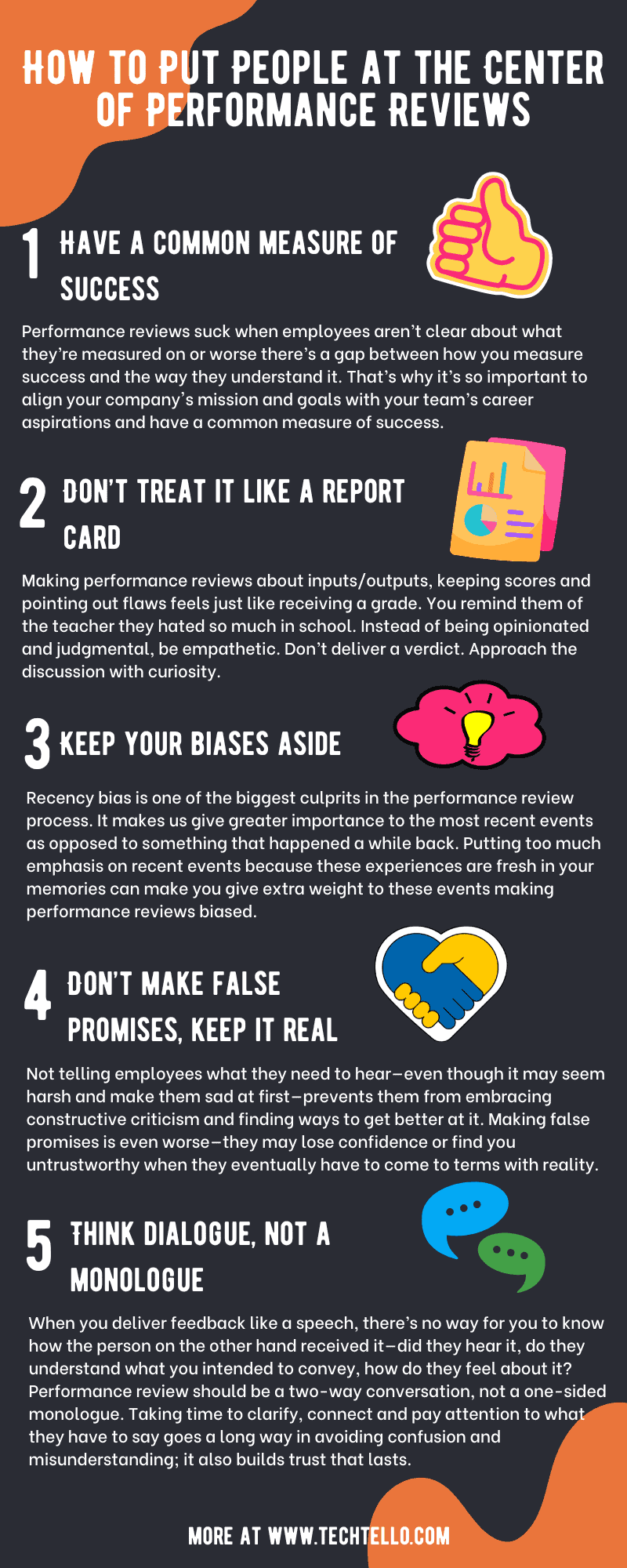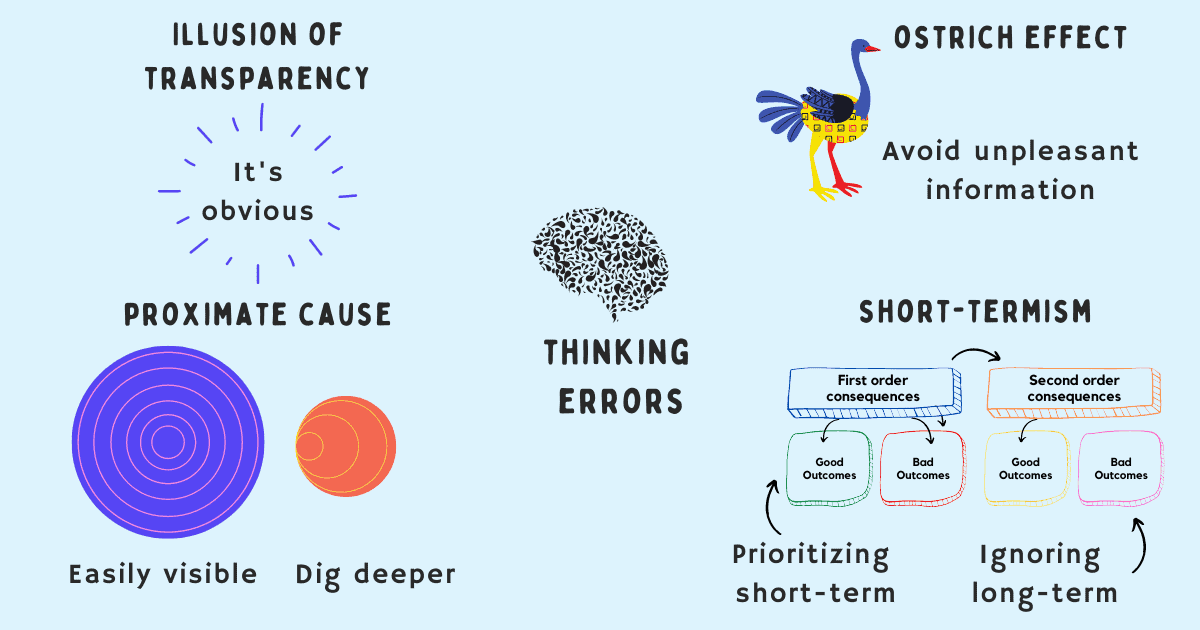How to Put People at the Center of Performance Reviews

Performance reviews are hard irrespective of whether you’re giving it or the one receiving it. The majority of employees aren’t motivated by performance reviews. Rather, its effects are quite the opposite—dissatisfaction, confusion and a sense of partiality creep into their heads.
When employees think they’re not fairly evaluated or their manager lacks information on their true value and worth, it affects their performance and productivity. Not being recognized for what they bring to the table hits them hard—they don’t see a point in taking up new challenges and opportunities or going the extra mile.
For most managers, the task to meet quarterly goals while also delivering performance reviews is overwhelming. They don’t work on it till the last minute and then struggle to put it together as the deadline approaches. No doubt the quality of review suffers and so do people who have to face it.
Employees who challenge their performance reviews are shut down—they’re punished for speaking up, told to handle criticism well and focus on improvement. But doing a poor job and not even acknowledging it is a costly mistake—it not only pushes employees to perform worse, it even undermines those who are doing well.
Making things better requires that you understand how people feel in response to what you do.
—Betty Johnson, Making Virtual Work
Doing performance reviews well requires intention and effort, but done right, it can give big returns on investment. Here are the five practices that worked well for my people and me:
5 practices to do performance reviews well
Have a common measure of success
Performance reviews suck when employees aren’t clear about what they’re measured on or worse there’s a gap between how you measure success and the way they understand it.
That’s why it’s so important to align your company’s mission and goals with your team’s career aspirations and have a common measure of success. To do this:
- Define what it is that you’re measuring.
- What value do you expect them to deliver?
- What skills do they need to build?
- What’s considered success and what’s not?
The performance review process will no longer be dreadful once you set clear goals and expectations, align them with the right opportunities, and provide continuous feedback and support throughout the year. Your team will feel less stress and anxiety and so do you.
Don’t treat it like a report card
When a performance review feels like a report card someone got in school, all those negative feelings from not doing well come rushing again. They remember being judged, being told they’re not good enough or being reminded of the limits of their skills and abilities.
Making performance reviews about inputs/outputs, keeping scores and pointing out flaws feels just like receiving a grade. You remind them of the teacher they hated so much in school.
Instead of being opinionated and judgmental, be empathetic. Don’t deliver a verdict. Approach the discussion with curiosity. Here are key things to remember:
- Instead of feeling helpless and hopeless about their situation, make them feel empowered to take action.
- Remind them that they aren’t limited by what they know today. Practice and persistence can help them build new skills.
- Talk about their achievements and how far they’ve come, all the good things they’ve done.
- Discuss improvements as growth opportunities.
- Encourage them to adopt the mindset of a learner—what they’re learning, how they’re improving and how they’re getting better each day.
- Don’t be vague. Give concrete examples of desired behaviors and actions. A great way to do this is to point out others in the organization who are already doing it well. Knowing others who demonstrate it is a great opportunity to learn from them.
Sheila Heen says in Thanks for the Feedback “Receiving feedback sits at the intersection of these two needs—our drive to learn and our longing for acceptance.”
Turning performance reviews from a yardstick to measure them into a growth opportunity creates positive feelings—they will stop resisting the feedback and start investing in their growth.
Keep your biases aside
Recency bias is one of the biggest culprits in the performance review process. It makes us give greater importance to the most recent events as opposed to something that happened a while back.
Putting too much emphasis on recent events because these experiences are fresh in your memories can make you give extra weight to these events making performance reviews biased.
For example: let’s say an employee made a mistake just a week before the review. While she had been consistently doing well, since the mistake happened recently, you may hold it against her in the review. Similarly, another employee who did well on a recent deliverable may earn extra points though their performance may not have been up to the mark up until this point.
Ahmed AlAnsari says in The Brand Dependence Model “Yes, it is difficult to believe that we are not entirely rational in our daily decisions and actions. However, by admitting that we are biased, realizing that we should question our choices, and stepping outside of our comfort zone, we are able to open up our eyes to a whole new horizon.”
To avoid the effects of recency bias, do this:
- Look at the data from the past and not what comes easily to mind. To do this well, it’s important that you keep a log of their performance throughout the year and do not rely only on memory.
- Consciously question your evaluation “Am I being biased in my evaluation based on what happened recently?”
- Ask “How much weightage have I given to their performance throughout the year as opposed to the things I can recall easily?”
Fairness in evaluation is a big component that determines whether employees see value in the process or resist it. By avoiding the effects of recency bias and other such biases (confirmation bias, fundamental attribution error) etc, you can at least try to be less unbiased in your approach.
Don’t make false promises, keep it real
One of the biggest fears managers face when sharing constructive criticism is the fear of losing the employee. We all know how costly it is to lose them, hire their replacement and get them up to speed.
This fear can often get in the way when it comes to sharing a realistic evaluation of their performance. You may try to soften the message by not saying what you really need to say or give them false hope by making promises you can’t keep.
Not telling employees what they need to hear—even though it may seem harsh and make them sad at first—prevents them from embracing constructive criticism and finding ways to get better at it. Making false promises is even worse—they may lose confidence or find you untrustworthy when they eventually have to come to terms with reality. For example: Don’t say things like “you’ll most likely be promoted in the next 6 months” if deep down you know that it’s quite unlikely. Don’t say “You’ll get that opportunity” when you know that someone else is more likely to get it.
The mistake most of us make in our crucial conversations is we believe that we have to choose between telling the truth and keeping a friend
—Kerry Patterson, Crucial Conversations
To share constructive criticism in a manner that’s received well:
- Keep the feedback about their behaviors and actions, don’t make it about them.
- Share your observations, not judgment.
- Help them tie your feedback to concrete examples.
- Discuss the steps they can take to build new skills and abilities.
- Ask if they see any gaps in the feedback or share a different opinion.
Be honest when it comes to opportunities, performance and promotion. It’s better for your team to face the truth upfront than disappointment from not getting what they want later.
Think dialogue, not a monologue
When you deliver feedback like a speech, there’s no way for you to know how the person on the other hand received it—did they hear it, do they understand what you intended to convey, how do they feel about it?
Douglas Stone says in Difficult Conversations “No matter how good you get at reframing, the single most important rule about managing the interaction is this: You can’t move the conversation in a more positive direction until the other person feels heard and understood. And they won’t feel heard and understood until you’ve listened. When the other person becomes highly emotional, listen and acknowledge. When they say their version of the story is the only version that makes sense, paraphrase what you’re hearing and ask them some questions about why they think this. If they level accusations against you, before defending yourself, try to understand their view. Whenever you feel overwhelmed or unsure how to proceed, remember that it is always a good time to listen.”
Performance review should be a two-way conversation, not a one-sided monologue.
- Share the feedback, but also take a pause in between to listen to them.
- Don’t make assumptions about what they heard, take time to clarify if they understand.
- Don’t fill the silence with words, embrace it to give them time to digest the information.
- Ask what questions they have and how you can clarify them.
- Be prepared to handle their reaction and show your support.
Taking time to clarify, connect and pay attention to what they have to say goes a long way in avoiding confusion and misunderstanding; it also builds trust that lasts.
A performance review can be a great return on investment only if you stop treating it like a process to get over with and start putting your heart and mind into it.
Summary
- As the performance season approaches, most managers find it hard to balance reviews while achieving team goals.
- Not giving proper attention to the review process is costly—dissatisfied and disgruntled employees are highly unproductive.
- Instead of considering performance review as something to get over with, apply the right practices to add value.
- Start with defining a common measure of success and seeking alignment with the members of your team. When employees are clear on what’s expected and are given regular feedback, it greatly reduces the chance of a surprise during the performance review process.
- No one likes to be handed over a report card. Don’t be like their judgmental teacher they hated so much from school. Rather, be empathetic and approach the conversation with curiosity.
- Be aware of the biases that we human beings apply subconsciously. You may not realize but recency bias might make you give more weightage to a recent event than something that happened a while back.
- You don’t want to hurt your employees. That’s fair. But at the same time, you don’t want to make false promises or sugarcoat the information. Your team members deserve to know their real feedback even if it’s a little painful at first.
- When you deliver a performance review like a monologue, it leaves the other person feeling unheard, disrespected and undervalued. Take a pause, make space to listen and connect.






























